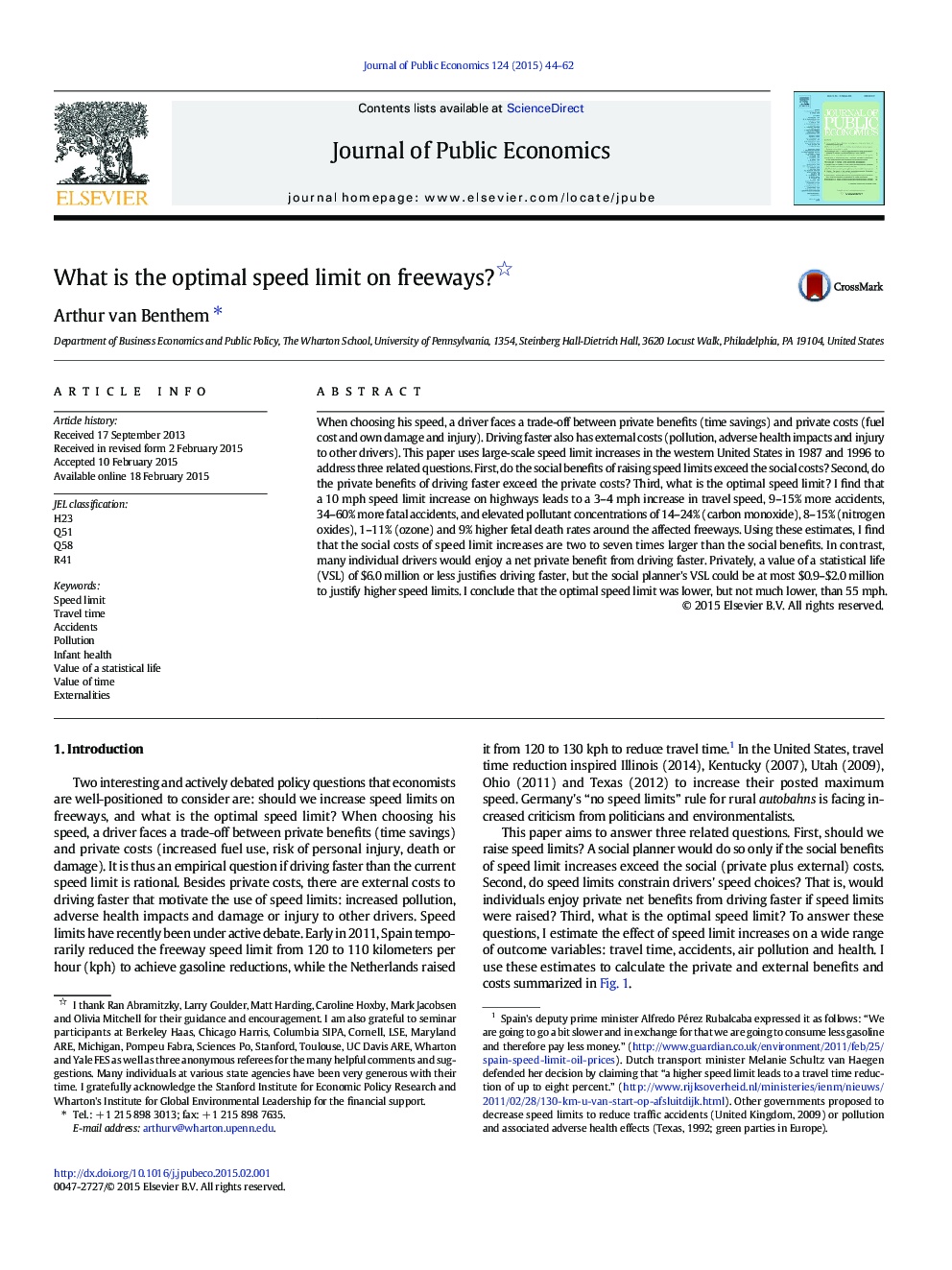| Article ID | Journal | Published Year | Pages | File Type |
|---|---|---|---|---|
| 968786 | Journal of Public Economics | 2015 | 19 Pages |
•I use speed limit changes to quantify the benefits and costs of driving faster.•I find that the external costs of driving faster sharply exceed previous estimates.•Higher speed limits lead to faster driving, more severe accidents and more pollution.•Privately, the decision to drive faster with higher speed limits appears rational.•The optimal speed limit in 1987 was lower, but not much lower, than 55 mph.
When choosing his speed, a driver faces a trade-off between private benefits (time savings) and private costs (fuel cost and own damage and injury). Driving faster also has external costs (pollution, adverse health impacts and injury to other drivers). This paper uses large-scale speed limit increases in the western United States in 1987 and 1996 to address three related questions. First, do the social benefits of raising speed limits exceed the social costs? Second, do the private benefits of driving faster exceed the private costs? Third, what is the optimal speed limit? I find that a 10 mph speed limit increase on highways leads to a 3–4 mph increase in travel speed, 9–15% more accidents, 34–60% more fatal accidents, and elevated pollutant concentrations of 14–24% (carbon monoxide), 8–15% (nitrogen oxides), 1–11% (ozone) and 9% higher fetal death rates around the affected freeways. Using these estimates, I find that the social costs of speed limit increases are two to seven times larger than the social benefits. In contrast, many individual drivers would enjoy a net private benefit from driving faster. Privately, a value of a statistical life (VSL) of $6.0 million or less justifies driving faster, but the social planner's VSL could be at most $0.9–$2.0 million to justify higher speed limits. I conclude that the optimal speed limit was lower, but not much lower, than 55 mph.
